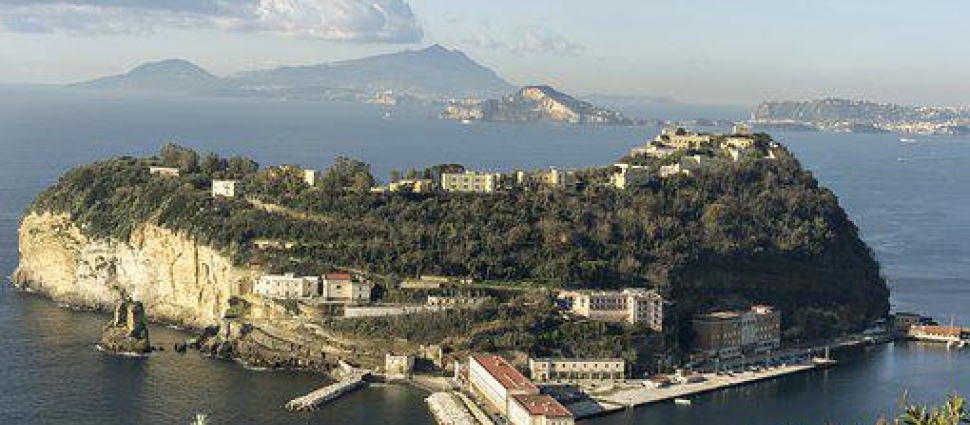Hadrian of Nisida and Theodore of Tarsus – Seventh-Century Star Teachers

Hadrian of Nisida and Theodore of Tarsus – Seventh-Century Star Teachers
Sharing a passion for learning and teaching, Hadrian of Nisida and Theodore of Tarsus partnered together to create a school that brought new resources, methods, and inspiration to England.
For those who think a scholar’s life is bound to be boring, this team will change your mind. In fact, reviewing Michael Lapidge’s Biblical Commentaries from the Canterbury School of Theodore and Hadrian[1], scholar Michael M. Gorman envisions their lives as an action movie, starring Sean Connery as Theodore and Peter O’ Tool as Hadrian[2]. I would concur, except, since Theodore was from Turkey and Hadrian from Libya, I would choose actors from those regions.
From the Mediterranean to the North Sea
These men’s lives were eventful from the start. Both of them traveled to Italy, most likely as refugees during the Arab conquest of much of North Africa and today’s Middle East (644-645). It was a time when hundreds of Christians were fleeing those areas.
Hadrian was born around 637 in North Africa – probably in the Roman region of Cyrenaica, which he described in his writings. He was then only a child during the Arab conquest, and might have continued his education in Italy.
The only thing we know for certainty is that he became the abbot of a monastery in the island of Nisida in the Bay of Naples. This area, a place of luxury resorts during the Roman Empire, was still a popular region for those who wanted to escape the hot summers of Rome. There, Hadrian might have met Pope Vitalian, who was so impressed by the young man’s wisdom, erudition, and linguistic abilities that he chose him as an interpreter during at least two imperial embassies.
In 664, when Deusdedit, archbishop of Canterbury, died, the British bishops sent his elected successor, Wigheard, to Rome to be ordained by the pope. But the plague which was raging in the area was no respecter of titles, and Wigheard died in Rome in 667.
Not wanting to wait for the long process of having a new archbishop elected in Britain, Pope Vitalian offered the position to thirty-year-old Hadrian, who declined but suggested a chaplain named Andrew. But Andrew’s health was too poor for such an appointment.
Then Hadrian proposed a monk named Theodore of Tarsus, who lived in Rome. Theodore was rich in knowledge and experience. Born in Tarsus (now in Turkey) in 602, Theodore had been educated in the important scholarly centers of the East, such as Antioch, Constantinople, and Edessa.
Vitalian was at first hesitant. Brought up in the Byzantine Empire, Theodore had probably absorbed many customs of the eastern church. In fact, his head was still entirely shaven, after the habits of the Greek monks.
The pope finally agreed to the appointment, but added two conditions: Theodore was to be tonsured after the manner of western monks (shaving just the top of his head), and Hadrian was to accompany him to England, expressively to keep him from importing Greek customs into the western church. The first condition meant that Theodore had to wait for his hair to grow. He was consecrated by Vitalian on March 26, 668, and he and Hadrian set out for England on May 27 of the same year, together with other companions and with large amounts of books.
Their journey was also eventful. While passing through the land of the Franks, Hadrian was detained by a ruler, Ebroin, who feared that he was a messenger sent to Britain by the Byzantine emperor. Hadrian had to wait until he was cleared of all charges, while Theodore continued his travels, arriving in England on May 27, 669. Hadrian joined him a year later.
A Seventh-Century Renaissance
While Theodore began his archbishopric, Hadrian became abbot of the monastery of St Peter and St Paul at Canterbury. This new appointment didn’t prevent him from assisting Theodore in his administrative duties. Bede, who left us most of our information about them, wrote that they traveled together throughout the island, organizing and instructing the churches.
It’s hard to imagine what this might have meant, especially for Theodore, who was 66 when he started his archbishopric. Few people in those days arrived at his age, let alone took on new responsibilities, traveling in difficult conditions in a strange and largely wild country. In fact, at that age, some people moved south to benefit from the mild Mediterranean climate. Theodore did just the opposite.
Both Hadrian and Theodore had to learn some of the local language, what we call Old English, since not everyone could speak Latin. And the church in Britain was still considerably young. Augustine of Canterbury, who had been sent by Pope Gregory I to evangelize Britain, had worked mostly within his limited area. Besides, the archbishopric had been vacant for five years before Theodore’s arrival, so the churches were operating without much supervision (there were only three bishops in office in the whole island).
Apart from making new appointments, Theodore called a national synod and made some provisions which continued in the English church (for example, he instituted regular synods and increased the number of dioceses).
From the start, Hadrian and Theodore realized that there was an urgent need for education of the clergy, especially since the Scriptures were still in Latin, and most of the clergy couldn’t even read them. For this purpose, they started a school in Canterbury, which became famous all over Europe.
We often hear of the twelfth-century Renaissance, or the Carolingian Renaissance of the ninth century but, in a way, Hadrian and Theodore started a seventh-century Renaissance in Britain, teaching students Latin and Greek, as well as poetry, astronomy, and math. Some commentaries, found in Milan, Italy, in the 20th century, reveal some of these teachers’ interactions with their students, including their descriptions of flora and fauna in North Africa and the near East.
For example, Theodore had to explain to his students what was the fruit the Bible called “melon,” a fruit most British people had never seen. He explained it was like a cucumber, but larger. In fact, he said, “In the city of Edessa they grow so large that a camel can scarcely carry two of them.”[3]
In the end, some of their students became as fluent in Latin and Greek as they were in English. In fact, when two centuries later Charlemagne looked for a top scholar for his court, he found one in England (Alcuin), who had studied in the school originally founded by Hadrian and Theodore.
Of course, the two men also taught theology. They were both well learned in the Scriptures and the writings of the church fathers, and followed the literal (vs. allegorical) interpretation of the Bible taught at Antioch. Though faithful to the pope and to the decisions of the western councils, Theodore brought some wisdom from the eastern church fathers, such as the Cappadocians. And both Hadrian and Theodore stood firm against heresies and deviations from orthodox Christian doctrines.
It’s doubtful that anyone at that time expected Theodore to live long after he arrived in England, and it’s possible that Hadrian had accepted to accompany him for a short time. Instead, Theodore lived twenty years in Britain (until 690), and Hadrian twenty more (until 710). They were both in their eighties when they died. Undoubtedly, they both had occasion to retire and return to the milder climate of the Mediterranean. Instead, they stayed in Britain, where they fulfilled their callings with eagerness and passion.
[1] Cambridge University Press, 2010
[2] Chronique, 184, https://www.persee.fr/doc/scrip_0036-9772_1996_num_50_1_1757
[3] Biblical Commentaries from the Canterbury School of Theodore and Hadrian, ed. B. Bischoff and M. Lapidge, CASS 10 (Cambridge, 1994). 35





